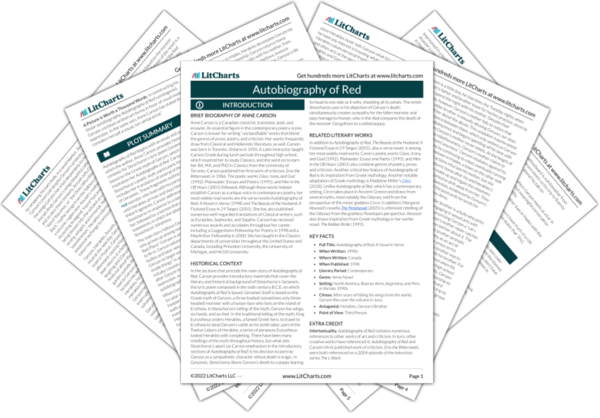Carson’s translation further develops Geryon as a sympathetic character by considering his interior life. Rather than simply presenting Geryon as a monster, she explores Geryon’s personal struggle with the shame of being seen as a monster. This scene also introduces the controllable nature of time. Geryon’s “Total Things Known About Geryon” is unique in its dismantling of conventional time, since it seemingly predicts Geryon’s eventual death at Herakles’s hands, though this event has yet to occur. Geryon’s attempt to play with the logical constraints of time suggests an attempt to impose order and control on time, which he otherwise has no control over. Lastly, Carson’s translation presents Herakles’s slaying of Geryon as particularly cruel in its senselessness. In classical mythology, Herakles’s task is to steal Geryon’s cattle, not kill Geryon, yet he ends up slaying Geryon for seemingly no reason at all. Underscoring Herakles’s senseless slaying of Geryon reverses their roles, rendering Herakles (the conventional hero) a cold-blooded killer and Geryon (the conventional monster) a tragic victim.
